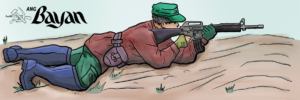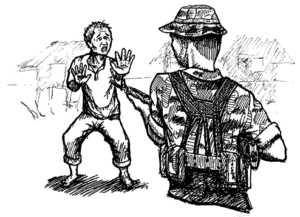Remembering the anti-Moro massacres under the US-Marcos dictatorship

To claim that the Jabidah and other pogroms did not take place under Ferdinand Marcos Sr.’s martial law is lunacy and a gross lie. This was the reaction of Moros in the face of the repeated pronouncements of pro-Marcos reactionaries that massacres against the Moro people are made up and deceptive.
They see the importance of commemorating these massacres especially as elections are nearing and politicians are once again courting their votes.
One such incident is the Jabidah massacre were 28 Moro youths were killed after they refused orders from the Armed Forces of the Philippines (AFP) to kill fellow Moros to occupy Sabah. The massacre took place in March 18, 1968 while they were training in Corregidor, Cavite City.
History recognizes the Jabidah massacre as the spark that ignited the armed resistance of the Moro National Liberation Front established by Prof. Nur Misuari in 1969. But the Moros consider the massacre in Palimbang, Sultan Kudarat in September 24, 1974 as the most violent and biggest massacre. Even now, survivors remember clearly the gruesome events and brutality perpetrated against them by the state.
“It was timed at dawn, just after the fourth day of the holy observance of the Ramadan, that the military fired their cannons on us,” Ama Amed, a madrasah sanawi (high school) teacher, narrated in an interview with Ang Bayan. “Several barangays in our town were hit. The people were shouting in fear, especially the women and children. We could do nothing but pray to Allah.”
Ama Amed was then just a teenager who dreamed of finishing school to help his fellow Muslims. When the soldiers invaded, he was one of the young ones who managed to escape to the forests. Some of his family members did not survive.
“The military was not satisfied after raining bombs on us. Four AFP battalions entered civilian communities and arrested everyone they saw. They dragged the men and detained them in a mosque in Tacbil in Barangay Malisbong.”
According to narratives gathered from survivors, around 1,500 men with ages 11 to 70 who were kept in the mosque were killed by the fascists. There are reports that up to 3,000 died in separate incidents during the period.
“Every day, a group of 10 or more would be taken out (of the mosque) and killed. They were made to dig their own graves before being shot. The detained who asked for food had copra (dried coconut) thrown at them. They were forced to strip and made to do lascivious acts, which are considered grave sins against Allah. They violated and trampled on our humanity and our faith as Muslims,” Ama Amed tearfully recounted the brutal experience.
There were also records that said up to 3,000 women and children, ages 3 to 60 who were arrested and kept inside a warehouse in the barrio and in military ships. Around 300 houses were burned by the fascists.
“Many women were raped by the soldiers. Many children died due to starvation and hardships that they experienced.” The Palimbang massacre was perpetuated two years after the Marcos regime imposed martial law in September 21, 1972.
According to some sources, the Marcos regime was then fearful that the MNLF will expand not only in Palimbang and other parts of Sultan Kudarat, but in the entire area under the then AFP Central Mindanao Command. The AFP reasoned that it only targeted the MNLF rebels. But what the state ordered was the genocide of the people of Palimbang. Under the dictator’s orders, AFP generals directed the bombings and massacre of Moro civilians. Brig. Gen. Gonzalo H. Siongco, appointed by Marcos as Sultan Kudarat’s governor, was among those who led the carnage.
In addition of the Jabidah and Palimbang massacres, the Moro people likewise will not forget the massacre in Manili in 1971 where 70 worshippers were killed inside a mosque in Manili, Carmen, North Cotabato. There is also the Tacub massacre which killed 40 civilians on their way home after failing to vote in a special election. They were accosted by soldiers in a checkpoint and shot in Tacub, Lanao de Norte.
During Marcos’ entire military rule, many Moro communities in Mindanao were destroyed, more than 200,000 people were killed and many were forced to evacuate, including half a million Moros who fled to Sabah, Malaysia.



